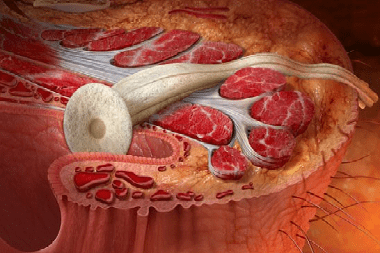Digestive system >>>> Paraproctitis - what is it?
Paraproctitis - what is it?

A purulent - inflammatory process that develops in pararectal tissue (rectal tissue) is called "paraproctitis". The disease is one of the most common diseases of the colon and rectum.
The causes of paraproctitis are associated with the introduction of infectious agents into the rectal tissue. Despite the fact that paraproctitis is caused, as a rule, by a mixed microflora, the bacterium Escherichia coli plays a leading role in the development of inflammation. The bacteria droop through microcracks, anal crypts, accidental damage to the rectal mucosa, through the bloodstream or lymph flow, causing edema, suppuration, the development of an abscess, and often the formation of fistulas. A complication of paraproctitis may be the involvement in the purulent process of adjacent tissues in layers (submucosal layer, subcutaneous layer, muscle layer), pus flowing into adjacent anatomical formations. Fistulas can come to the surface in the area of the anterior abdominal wall, thigh, scrotum.
Paraproctitis has an acute and chronic course. The chronization of the process occurs in connection with the incorrect treatment of acute paraproctitis.
Signs of paraproctitis:
- The temperature rises to subfebrile,
- The general state of health is impaired (weakness, chills),
- The pain symptom is felt in the rectum, in the anus, in the perineum (depending on the location of the abscess),
- Pain can worsen with bowel movements, physical exertion, coughing,
- In the area of the abscess, swelling is observed, tissue compaction is palpable.

Treatment of paraproctitis is carried out with surgical methods in order to open the abscess and create opportunities for the outflow of purulent contents. If necessary, resection of damaged tissues, anal crypts or anal glands is performed. Sometimes surgical intervention is carried out in two stages with a break of several days (up to a week): at the first stage, the abscess is opened, drained, and treated with antiseptic agents. At the second stage, the affected tissues are excised. If there is a fistula, it is excised. The postoperative period requires the patient to carefully follow the rules of personal hygiene.

Read

Read



























